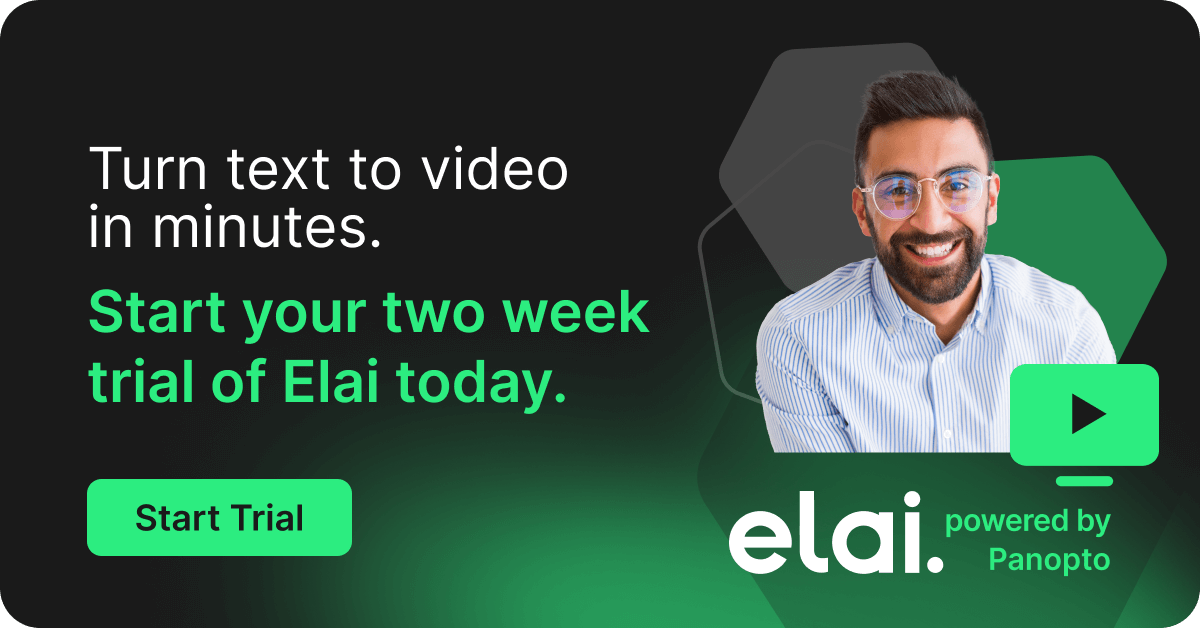- Uncategorized
Our Journey with Lecture Capture: A Learning Technologist’s View
Last year I was contacted by both our Deans of Faculty who presented me with a challenge. They had just been in discussions with the student union about the fact that a number of scheduled lectures clashed with important sporting fixtures.
While this might not be a big issue at other universities (the answer simply being: the lecture takes precedence) at the University of St Mark and St John, we’re renowned for our Sports-related programmes. This means that many of our students represent the university at sport, including at an international level, and this is something we want to strongly encourage as part of the wider student experience.
The idea of implementing campus-wide lecture capture had been put forward as a possible solution, allowing students to catch up on anything they might miss because of their sporting commitments. Naturally, part of my role as Senior e-Learning Technologist is to offer advice on technologies like lecture recording and so I was asked to assess the best way forward.
The first step was to create a detailed project specification, in close collaboration with the Deans. This process identified two key requirements:
- Automation: we wanted a system that would run with little-to-no intervention from academic staff
- Integration: it was important that any new system worked seamlessly with our Virtual Learning Environment (VLE) – Moodle.
These requirements were then used to identify possible solutions. During this evaluation process, it was very important for us to speak with other universities that had already implemented lecture capture, to gain valuable insights from actual users. We had particularly useful conversations with the University of Essex, who record all lectures across the entire university. They gave us some honest and practical suggestions for implementing a lecture recording system at scale.
Once we’d identified Panopto as our lecture capture solution of choice, we began a pilot, kitted out a heavily-used lecture room and asked academics to give it a try. For most staff, the appeal of the system was that their lecture would be automatically recorded and then made available in the familiar VLE setting within an hour or so. All with no additional work required on their part!
For those who did want to be a bit more experimental with the technology, Panopto was also flexible enough to support an academic who wanted to add extra sessions through the editor.
Following the success of the pilot, we are confident that the solution will work for us at scale and we’re currently in the process of rolling it out across a further 17 classrooms. We plan to have lecture capture available in every teaching room on campus by the start of the 2014/15 academic year. We also plan to make Panopto available on all staff machines, so they can record educational materials whenever, wherever.
Although we’re still relatively early on in our use of lecture capture, we’ve already got a solution and workflow that allows an academic to simply walk into a lecture theatre, deliver their presentation as normal and students can then use the existing VLE interface to access a high-quality recording of that lecture within an hour of the session ending. This means that any technical barriers to adoption are minimal. With this ‘no-clicks’ approach, it is much easier to get academic staff buy-in.
What about the benefits we’ve seen so far? Well, it’s fair to say that they reach far beyond solving our initial challenge around students missing lectures because of sports fixtures! As well as giving all students a chance to review learning material a second (or third, or fourth) time, we think it will be particularly useful for students with learning difficulties, such as dyslexia. Some colleagues had already done some research into the benefits of podcasting to support dyslexic students, and we think the ability to offer synchronised audio narration alongside the on-screen content will enhance learning for these students even further. We also see lecture recording as a way of potentially making our educational materials available more widely, supporting flipped classroom teaching practices and possibly helping us create MOOC content.
Having been through the experience of implementing lecture capture at the University of St Mark and St John, what advice would I give others who are thinking of doing the same? Firstly I’d say – talk to other universities to get an in-depth picture of how recording lectures works for them in practice. Secondly, make it as easy for academic staff to get involved as possible by choosing a system which can automate the lecture recording process – like Panopto.
Adam Read is the Senior e-Learning Technologist at the University of St Mark and St John (Marjon). You can follow him on Twitter @adamread.
If you are looking for a lecture capture system and want to try Panopto for yourself, sign up for a free trial. Alternatively, you can request a demo of the system.




